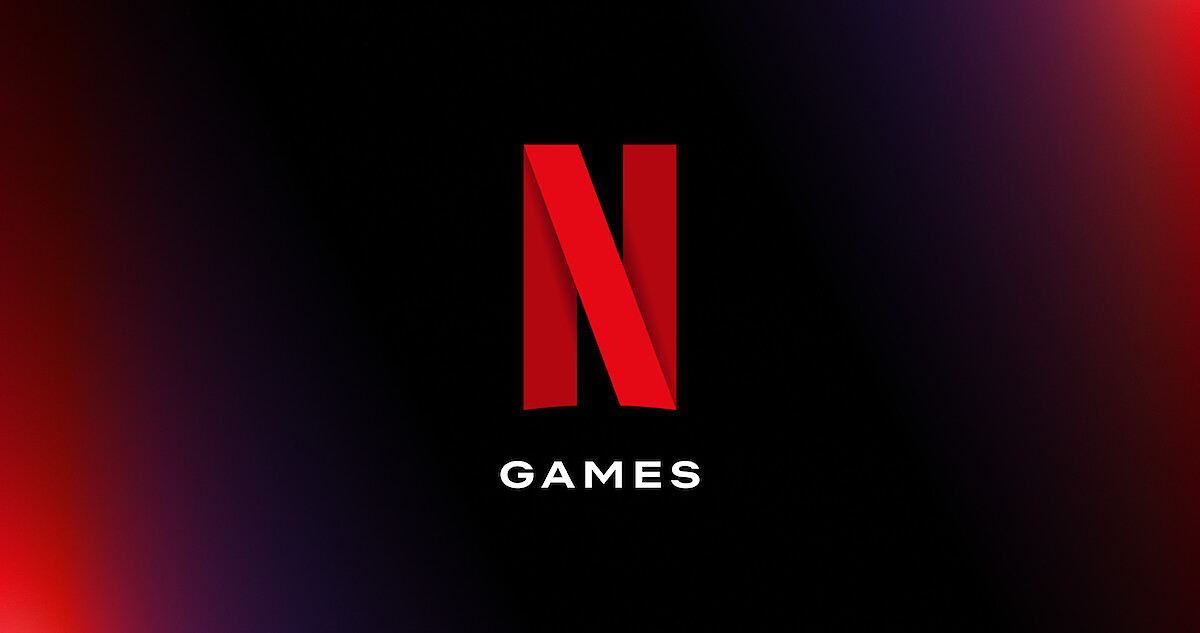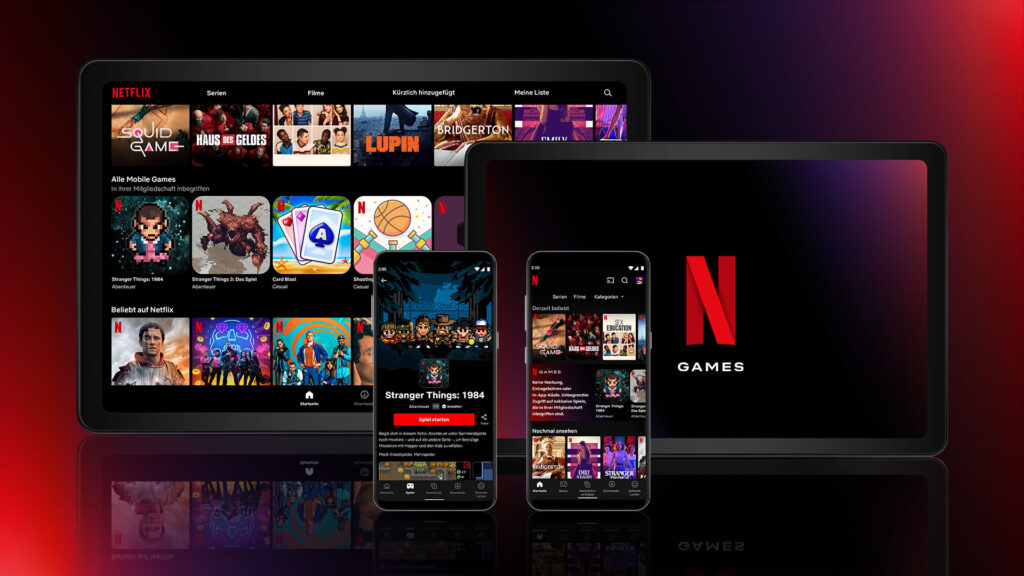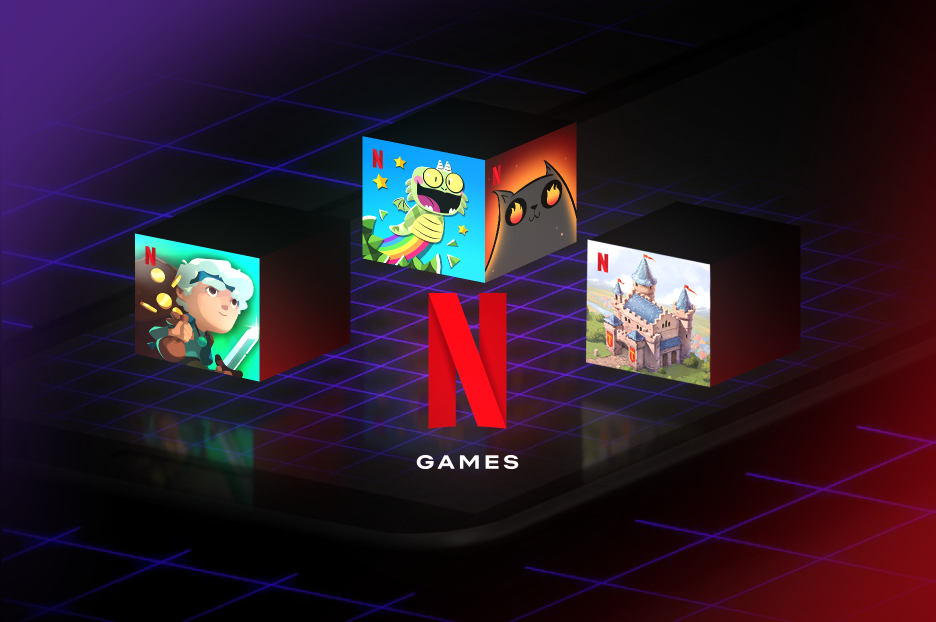Physical Address
304 North Cardinal St.
Dorchester Center, MA 02124


Netflix Generative AI Gaming: Netflix has always been a trailblazer in the world of streaming, evolving from a DVD rental service to a global entertainment powerhouse. Their ability to see around the corner—to anticipate not only what viewers want but also how to deliver it in ways nobody else had thought of—has always set them apart. But in 2024, Netflix took an audacious step by announcing its shift toward using generative AI to create games. This strategy is raising eyebrows and exciting imaginations, as the company aims to chart a new path not just in streaming, but in interactive, AI-powered entertainment. While this move is sparking questions about costs, subscription fees, and the true appeal of generative AI in gaming, it’s also a thrilling indication of what the future might hold.
What comes to mind is the realization that, in 2024, tech giants are increasingly aware that breaking into new frontiers is essential for long-term survival. Netflix, which has arguably become a tech giant in its own right, seems keenly aware of this. This is a company that’s known firsthand how disruptive technology can be—after all, they were the ones who left Blockbuster, the former king of home entertainment, in the dust by embracing streaming technology. Now, Netflix appears to be challenging itself to avoid complacency, knowing well that if it rests on its laurels, it risks being surpassed by new competitors eager to innovate. By exploring generative AI, Netflix is pushing into uncharted territory, determined to stay not just relevant, but ahead of the curve.
It’s fascinating to watch Netflix, a company built on delivering the latest shows and movies, now stepping into gaming—a space that’s constantly evolving. What excites me most is how Netflix’s willingness to innovate signals its readiness to redefine what it means to be an entertainment platform. In this way, they’re not just reacting to shifts in consumer interests but actively shaping what those interests might be. For Netflix, embracing generative AI could mean the ability to offer audiences deeply personalized and immersive experiences, turning passive viewers into active participants. This isn’t just Netflix adding more titles to its library—this is Netflix pushing the boundaries of storytelling itself.

Netflix’s journey into gaming didn’t happen overnight. The company started small, focusing on mobile and interactive experiences rather than diving into traditional console games. Shows like Black Mirror: Bandersnatch and Battle Kitty introduced elements of choice-based gameplay to Netflix’s platform, letting viewers influence storylines and engage on a deeper level with the characters and plot twists. While these early interactive titles were experimental, they revealed Netflix’s willingness to experiment and see how viewers responded to a more hands-on approach to content.
When Netflix started acquiring game studios like Night School Studio (known for Oxenfree) and Boss Fight Entertainment, it was clear they were committed to expanding their gaming footprint. These acquisitions allowed Netflix to integrate game development expertise and diversify its content offerings beyond just passive viewing. However, these early efforts focused on relatively low-cost, mobile-oriented games, keeping things manageable as Netflix tested the gaming waters.
Now, with the announcement of generative AI for game creation, Netflix is no longer testing the waters; it’s diving in headfirst. By combining its existing content expertise with cutting-edge AI technology, Netflix has the potential to make gaming more engaging and accessible to a broader audience. What’s exciting is that Netflix’s venture into generative AI suggests they aren’t merely interested in creating more games—they’re looking to create an entirely new type of game, one that aligns with their expertise in storytelling and viewer engagement.
In sum, Netflix’s shift toward AI-driven gaming could redefine entertainment. As someone who’s followed their journey closely, I’m optimistic that Netflix’s new focus on generative AI will yield experiences that feel fresh, personalized, and unlike anything currently available. While the journey has just begun, Netflix’s bold step forward suggests an exciting future not only for the platform but for interactive entertainment as a whole.
With Mike Verdu now at the helm of Netflix’s new generative AI division for games, Netflix is signaling its most ambitious move yet in gaming. This isn’t just a casual experiment—it’s a commitment to cutting-edge technology that could fundamentally reshape how games are made and experienced on the platform. Generative AI holds the potential to transform game development, allowing for faster production, richer storytelling, and immersive interactivity that simply wasn’t feasible before.
One of the most compelling aspects of generative AI in gaming is its ability to streamline and scale the creative process. Traditionally, crafting a high-quality game requires extensive teams of artists, designers, and developers, each working on individual assets like characters, environments, and storylines. This process is not only costly but also time-consuming. With generative AI, however, Netflix can efficiently produce these elements without the need for a massive workforce. AI can generate visual assets, character dialogues, and even entire worlds, giving developers more freedom to focus on refining the gameplay experience.
What excites me here is the scalability this approach offers. Generative AI could empower Netflix to produce a diverse range of games quickly, each with its own unique aesthetic and story. The thought of a single team being able to produce vast, immersive game worlds through the power of AI is fascinating. Not only does this mean more variety in Netflix’s gaming catalog, but it also opens the door for more experimental, boundary-pushing titles that wouldn’t have been possible otherwise.
In researching the industry landscape, I discovered that Netflix isn’t alone in leveraging generative AI to reshape game development. Numerous companies are already exploring the potential of this technology to enhance creativity and efficiency:
• Ubisoft developed an AI tool named Ghostwriter specifically for generating dialogue for non-player characters (NPCs). This tool helps scriptwriters create dynamic, varied interactions within games, allowing NPCs to feel more realistic and responsive to players’ actions and decisions.
• NVIDIA has integrated generative AI into its Omniverse platform, enabling developers to create realistic animations and environments more seamlessly. By automating parts of the visual creation process, NVIDIA’s tools help bring complex, lifelike environments to life without the usual bottlenecks of manual animation.
• Inworld AI is a company focused on building AI-powered NPCs with advanced conversational abilities. Their work is pushing the boundaries of immersion by allowing for more natural and responsive interactions with in-game characters, potentially changing how players engage with NPCs entirely.
• Scenario AI offers generative AI tools that assist in creating game assets, including character designs and environments. By training AI models to match specific artistic styles, Scenario AI allows developers to explore diverse aesthetics quickly and accurately.
The adoption of generative AI across the gaming industry demonstrates how this technology can both enhance creativity and streamline workflows. As I see these developments, it’s exciting to think about how Netflix’s take on AI-driven game creation could stand out, especially given its strength in storytelling. The idea that Netflix could soon rival established studios with high-quality, AI-generated content is thrilling and speaks to the transformative power of this technology.
One of the most exciting applications of generative AI, in my view, is its potential to create NPCs that feel genuinely alive. Imagine a future where NPCs don’t simply repeat scripted lines but adapt and respond to you based on an ongoing conversation. Picture a game where you can engage NPCs in detailed discussions, learning about their backstories or local legends that change depending on your choices and actions. This is the type of immersive experience that could redefine how players engage with gaming worlds, making them feel more organic and responsive.
For me, the thought of NPCs with real conversational depth is captivating. It’s the kind of gameplay that could make each session feel fresh and unique, as players encounter characters with evolving personalities and narratives. This shift could take in-game storytelling to a whole new level, creating experiences that blur the line between scripted dialogue and genuine interaction. While we may still be a few years away from fully realizing this vision, I’m optimistic that Netflix’s push into generative AI could bring us closer to this type of immersive, adaptive gameplay than ever before.
One of the most thrilling possibilities with generative AI is its potential to create gameplay that adapts uniquely to each player. With AI-driven elements, Netflix could develop games where storylines, dialogue, and challenges dynamically shift based on the player’s decisions, preferences, and style. Imagine a game where each player’s journey is distinct, with AI evolving the game’s narrative in real-time to make the experience feel personal and engaging. This level of interactivity and personalization is something traditional games have struggled to achieve, and Netflix’s dive into generative AI could be the key to unlocking this vision.
Generative AI has the potential to redefine what we think of as “personalization” in games. Imagine a fantasy game where every player’s journey is truly unique: the choices you make impact the characters you meet, the quests you’re offered, and even the world itself. AI could create dialogue tailored to your past decisions, or generate new, unexpected challenges based on your play style. For me, the appeal of this lies in the idea of playing a game that feels alive, where the storyline and challenges are fluid, shaped by my decisions. In this type of AI-driven environment, games could move beyond mere choice trees and branching paths; they could become adaptive, responsive worlds where players have limitless possibilities.
One fascinating aspect of this approach is how it can make games feel like they have an endless capacity for surprise. In traditional games, the choices are typically limited and predictable, but with generative AI, even replaying the same game could yield new storylines and encounters. This kind of adaptive storytelling could revolutionize gaming as we know it, blurring the lines between scripted narratives and true player-driven experiences.
As I dove deeper into this topic, I became curious about the driving force behind Netflix’s generative AI initiative: Mike Verdu. Verdu is a well-established figure in the gaming industry, and his career reflects a consistent dedication to pushing the boundaries of game development and technology. Knowing Verdu’s history helps me feel confident in Netflix’s direction here—he’s not just someone with industry experience; he’s someone who’s been an agent of change in gaming.
• Early Beginnings with Legend Entertainment: Verdu co-founded Legend Entertainment in 1989, a company renowned for its adventure games like Mission Critical and The Wheel of Time. He served as CEO until 1998, overseeing the company’s growth and eventual acquisition. This experience laid the foundation for his career, giving him a deep understanding of the creative process in gaming.
• Roles at EA and Zynga: Verdu joined Electronic Arts in 2002 and played a pivotal role in the development of popular titles like Command & Conquer 3: Tiberium Wars and The Lord of the Rings: The Battle for Middle-earth II. Later, at Zynga, he served as Chief Creative Officer, where he was instrumental in developing social games that reached millions of players. His time at Zynga especially speaks to his understanding of the value of player engagement and adaptability—core principles in generative AI games.
• Leadership at Facebook Reality Labs and Netflix: In 2019, Verdu became VP of Content for Facebook’s Reality Labs, focusing on virtual and augmented reality. His expertise in immersive technology from this period is a natural fit for his work at Netflix, where he’s now leading the push into AI-driven gaming. With Verdu as VP of Generative AI for Games, Netflix is clearly aiming to create immersive, interactive experiences that redefine how players interact with games.
Knowing that someone with Verdu’s track record is guiding Netflix’s efforts gives me a lot of confidence. He’s been at the forefront of gaming innovations for decades, so if anyone can lead Netflix into this new realm, it’s him.
As promising as AI-driven games sound, there’s a lingering concern: wouldn’t real-time generative AI require immense server resources, potentially leading to increased costs? Real-time generative AI is computationally intensive; it relies on powerful servers to process and adapt to players’ actions, creating new content on the fly. These resources are expensive, and there’s a risk that they could drive up subscription costs if Netflix isn’t careful about balancing this investment with subscriber affordability.

Personally, I subscribe to Netflix primarily for video content, not gaming. So if Netflix’s foray into gaming starts pushing subscription prices higher, I would have mixed feelings. There’s something unsettling about the idea of subsidizing Netflix’s gaming ambitions when my main interest is in movies and series. While I’m excited to see how far Netflix can take this technology, I would be frustrated if the result was a blanket price hike that forced everyone to pay more, even those who have little interest in gaming.
However, I do think Netflix could handle this potential issue in a way that makes sense for all subscribers. If they succeed in building a strong, in-demand library of AI-driven games, it would make sense to eventually introduce a separate fee for premium gaming access, similar to how they offer an ad-supported tier for basic content. This could allow subscribers to opt into the gaming experience without impacting everyone’s subscription cost, offering a balance that feels fair and sustainable.
As exciting as Netflix’s new direction in generative AI gaming is, there’s a very real concern around the cost of implementing such technology on a large scale. Generative AI, particularly when it operates in real-time to adapt gameplay, requires a lot of server power, which can drive up operational costs. Netflix seems aware of this challenge, and their approach to managing these expenses is strategic and, in my opinion, well-considered. Here’s how they might keep costs under control while delivering innovative gaming experiences.
One way Netflix could manage these costs is through selective rollouts. By launching AI-driven games on a limited basis, Netflix can assess demand and gather valuable data on how much users engage with these new features. This cautious approach could prevent Netflix from overcommitting resources to a feature that hasn’t proven its worth yet.
For me, this approach makes a lot of sense. When any company dives into a new technology, especially one as complex and costly as generative AI, it’s essential to gauge consumer interest first. Selective rollouts allow Netflix to avoid excessive spending upfront, keeping their investment focused on titles that resonate with their audience. As a subscriber, this cautious entry into AI gaming feels like a smart move—Netflix can get a sense of what’s working without impacting costs across the board.
Netflix has already shown interest in ad-supported tiers for its core streaming service, and a similar model could apply to AI-driven games. By placing these advanced games in a premium, ad-supported tier, Netflix can help offset the high development and server costs without passing those costs onto subscribers who aren’t interested in gaming. This would give Netflix flexibility, allowing gamers to access enhanced features without financially impacting all subscribers.
As a subscriber, I appreciate this potential solution. I primarily use Netflix for streaming shows and movies, so if Netflix’s new gaming push were to raise subscription fees, it would feel unfair to me as a non-gamer. Offering ad-supported access or a premium tier for those who want to experience AI-driven games directly is a clever way to maintain affordability for the broader user base while giving avid gamers the option to enjoy new features.
Generative AI itself could be part of the solution to the cost challenge. By automating parts of the asset creation and world-building process, Netflix can reduce the traditional costs associated with game development. Instead of needing large teams and budgets to build expansive game worlds and detailed characters, Netflix can use AI to handle these tasks, investing in high-quality games without a massive workforce.
For me, this is where AI’s true potential comes into play. There are a lot of negative articles around the idea of AI in creative fields, with critics claiming that AI can’t replace the creativity of human developers. I disagree with these assessments. As long as talented people are overseeing and guiding the process, AI can actually enhance the creative process, making development more efficient and allowing creators to focus on the elements that require the human touch. Articles suggesting that AI is “here to do your job badly” seem misguided, in my view, because they overlook the collaborative potential of AI when it’s used responsibly.
For instance, a recent article on SI.com criticized Netflix’s decision to dive into generative AI for games, pointing to an AI-generated image of “roads that lead nowhere” as a symbol of the technology’s limitations. I think this is a narrow perspective. AI isn’t about replacing creativity; it’s about enhancing efficiency and making previously impossible projects feasible. With Mike Verdu’s experience and oversight, I believe Netflix can leverage AI in ways that benefit both creators and players.
One question that’s on my mind—and likely on the minds of other consumers—is what these AI-powered games would actually feel like to play. Netflix’s “content ecosystem” suggests that their games could expand on existing shows and movies, creating interactive experiences that allow subscribers to dive deeper into beloved series and worlds. Imagine a game based on Stranger Things or The Witcher, where generative AI adapts to your choices, creating new storylines, characters, and challenges each time you play. This kind of interactivity would let fans experience their favorite series in entirely new ways, crafting their own stories within these iconic worlds.
As someone who loves deeply immersive stories, I find this concept incredibly exciting. Games with adaptive AI could take Netflix’s shows to a new level, allowing players to explore side plots, character backstories, or alternate endings based on their actions. It’s one thing to watch a show and passively enjoy it; it’s another to engage with that story, influencing its direction and seeing how it evolves around your choices. For subscribers who aren’t traditional gamers, these episodic, story-driven games could offer a gateway to gaming that feels familiar, yet refreshingly interactive.
It’s impossible to discuss generative AI in gaming without addressing the concerns surrounding this technology. Many critics argue that AI-driven content could lead to higher subscription costs or replace human creativity with impersonal, machine-generated content. Articles like one from The Verge report that Netflix is even removing most of its interactive shows, suggesting that earlier efforts in interactive content didn’t gain enough traction.
While some see this shift as evidence of Netflix’s ongoing struggles in gaming, I have a different theory: Netflix might be clearing the way for a more ambitious, AI-driven approach to interactive content. By focusing on generative AI rather than standard interactive formats, Netflix could avoid confusing users between its current offerings and the future potential of AI-enhanced games.
For me, the potential of AI-enhanced gaming far outweighs these concerns. Netflix has been careful to keep its core streaming strong and subscriber-friendly, and I believe they’ll continue prioritizing their traditional audience. AI-driven games could add value without negatively impacting the broader subscription base, especially if Netflix rolls out features like ad-supported tiers or premium options for dedicated gamers.

Netflix’s venture into generative AI gaming represents more than just a step forward—it could mark a complete evolution in how we interact with entertainment. Unlike traditional platforms like Hulu or Disney+, Netflix is now poised to become an all-encompassing media experience. By creating personalized, immersive games that weave into the worlds of popular shows, Netflix has the opportunity to redefine viewer engagement. Imagine exploring the Upside Down in Stranger Things or embarking on quests inspired by The Witcher—but with a twist: every journey is unique, tailored to your choices, and deeply interactive. This type of experience could make Netflix a true trailblazer in the entertainment landscape, setting it apart from competitors who rely solely on passive viewing experiences.
Netflix’s approach to generative AI gaming, however, remains experimental, and they’re likely to tread carefully to prevent alienating their core audience. AI-driven gaming is an entirely new direction for Netflix, one that could disrupt their own model and alter consumer expectations. But with Mike Verdu at the helm, Netflix is guided by a seasoned executive with extensive experience in both the traditional and cutting-edge realms of game development. His background suggests that Netflix isn’t just dabbling in AI—it’s a serious investment in crafting a future where entertainment, gaming, and interactive media coexist seamlessly. Verdu’s vision for AI as a “catalyst and accelerant” to creativity could mean that Netflix’s experiments in AI gaming yield an entirely new way of experiencing stories.
For consumers, this new chapter in Netflix’s strategy is worth watching closely. As Netflix explores the potential of AI, the question remains how the company will balance these high-tech innovations with the affordable, accessible content subscribers know and love. Will these AI-driven games become a separate, premium offering? Will the main subscription remain unaffected? These are important considerations as Netflix shapes its future—and if they get it right, AI-enhanced games could open up fresh avenues for storytelling and engagement without compromising the core Netflix experience.
While the skepticism surrounding AI in creative fields is understandable, it may be short-sighted to dismiss Netflix’s plans outright. It’s a fact of business: companies are constantly seeking ways to streamline operations and reduce costs, and AI is a powerful tool that can make certain labor-intensive tasks more efficient. But that doesn’t mean AI is here to replace creativity. Instead, it offers a way to enhance and extend it, providing game developers with more time to focus on the human-centered aspects of storytelling and design.
At this stage, Netflix’s move into AI gaming is an early experiment, one with both potential risks and rewards. However, dismissing it before we see the results could limit our understanding of what AI could contribute to entertainment. With careful oversight, strong leadership, and a consumer-focused approach, Netflix’s use of generative AI has the potential to be a positive force for the company and its subscribers alike, pushing the boundaries of interactive entertainment in ways we can only begin to imagine. It’s a development worth watching—not with skepticism, but with curiosity about what’s possible when technology and creativity converge.
Click here for my latest posts!